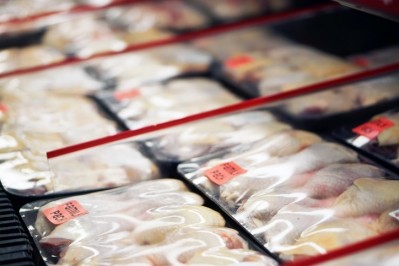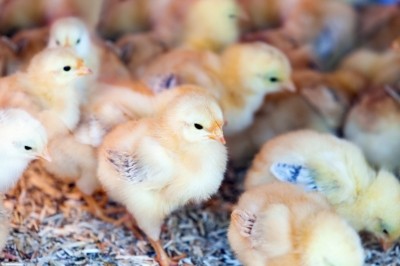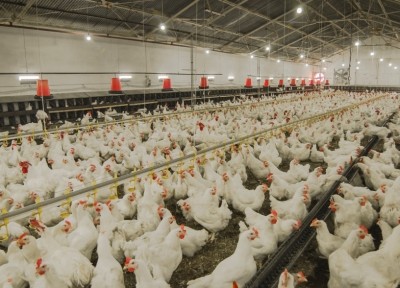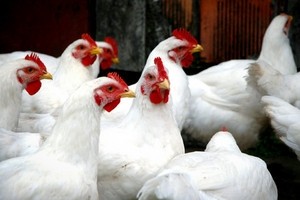Special Edition: livestock production and feed consumption trends
Sentiment in the poultry sector is 'pretty good', despite some headwinds: analyst
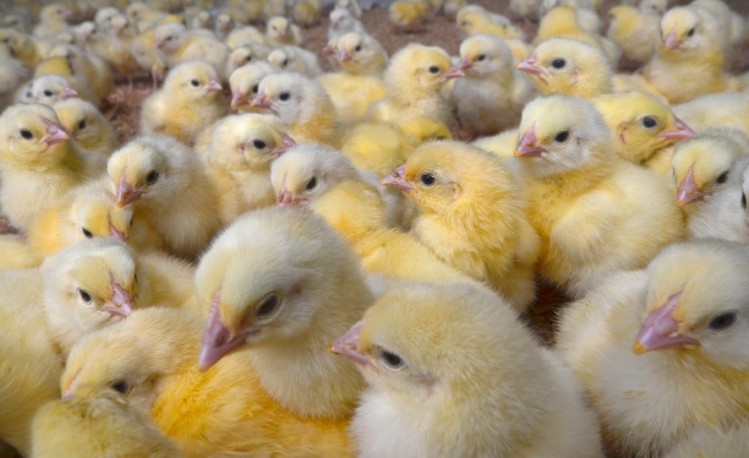
“In general the sentiment in the global poultry sector is pretty good, despite headwinds such as avian influenza (AI) or the slow pace of growth in emerging economies. With high beef and pork prices, we see trading down to poultry – it is proving to be the most affordable animal protein in all markets and the industry reflects that, showing 2.8% annual growth globally,” Nan-Dirk Mulder, animal protein analyst at Rabobank, told us.
He said the Dutch agribusiness research team's outlook for late 2015 and 2016 is bullish, as feed prices are still expected to remain at low pricing levels, and global breeding stock supply will be very low in regions with AI-related import restrictions, such as China and South-East Asia.
“Feed prices remain lower than three years ago and have been declining overall in the past two years, supporting fundamentals for the industry,” said the analyst.
AI concerns remain in some regions though, said Mulder.
US production
Laying hen production in the US has been badly hit by the virus, which moved in to the US West Coast at the end of 2014 and reached the Midwest in early 2015. US egg production totaled 7.69 billion during August 2015, down 9% from last year, reported the American Egg Board.
Table egg flock size in May 2015, was 296 million layers. As of September, the table egg flock dropped to 273 million layers due to the AI outbreaks, said the Board.
On a volume basis, US egg exports were down 9% in the first half of the year.
But US broiler production has not been affected by the virus - the Rabobank poultry quarterly in September put that down to factors such as the shorter life cycle of the birds and the smaller farm sizes rather than increased biosecurity.
However, the analysts said the broiler industry must stay on alert. While the risk of AI infection may be low in that segment, producers cannot afford any biosecurity lapses as bird losses, evidently, would be detrimental for sector economics.
Rabobank expects the rate of US production growth in H1 2015 to continue into the second half.
European gains
“The European layer producers have been able to take advantage of the trade bans on US egg exports,” said Mulder adding that the EU poultry market overall is growing, in strong contrast to other animal protein segments in the region.
Domestically, demand remains strong with relatively high breast meat prices, he said.
Total EU production in Q2 2015, reported Rabobank, was 2% larger than the same quarter in 2014, underlying recovery from the tight supply last year on the back of AI culling.
“Supply in North Western Europe is somewhat tight due to changes in producers’ strategy and business models to address market demand for premium poultry products,” said Mulder.
However, consumer choice won out in the Netherlands in February 2015. The country’s consumer authority found that agreements to remove regular chicken meat from Dutch supermarket shelves to favor a type of new sustainably reared chicken only - chicken of tomorrow - went too far and did not satisfy the efficiency arguments necessary for exemption.
Interestingly, the Polish poultry industry is growing at a good pace as producers there leverage a more cost-competitive, standard chicken model, said Mulder.
Russian market
Russia has reached 92% in chicken production self-sufficiency, he said.
Due to the extended sanction on exporting countries by the government and the sharp drop in feed prices following better growing conditions, the local poultry sector is flourishing.
“There are shortages in other animal proteins, particularly in pork, so poultry is benefiting from a lot of trading down,” said the analyst.
More favorable market conditions are pushing margins up again and encouraging investment. Thailand’s CP Foods announced the acquisition of Severnaya poultry in July.
Chinese poultry sector struggling
The biggest exception to the bullish global market environment is China, said the analysts. Chinese consumers moved away from chicken towards red meat as a result of several food safety scandals and the AI outbreaks, and the sector there is still struggling with a shrinking market situation.
Conditions are improving, particularly as pork prices are high, but the sector remains fragile, reported Rabobank’s quarterly.
The economic slowdown and the AI outbreaks continue to pressure the Chinese poultry industry, it said.
The ongoing restrictions on grandparent stock imports from the US and some parts of the EU will impact production in 2016 and will maintain poultry prices at high levels. "There are expectations of 25 to 30% fewer imports of breeding stock this year," said Mulder.
This development should benefit the local industry, especially at farm and breeding level, said the analysts. But whether local producers can benefit is uncertain as upward pricing power will be limited under worsening economic conditions, said the research team.
